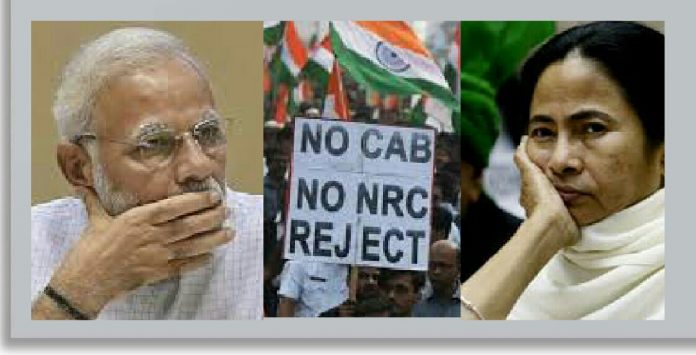
Our special correspondent:
Anti incumbancy is a factor that all political fear most. But why citizens become anti incumbant ? why governments fail to fullfil the want of their citizens . in India and perhaps in world time has come to nanalysis the trend.However the reason may be simple – the people running governments are not qualified enough to run it. It is like a bad driver driving a high end car.
Incumbency refers to the period during which an official holds office. If one were to define anti-incumbency, it simply refers to vote exercised against the elected officials in power. Anti-incumbency at best can be said to be concept based heavily on probabilities. However, very often, this very concept largely decides the fate of parties. Incumbency also called the ‘double-edged sword’, more often than not, becomes the factor which puts the ruling party out of power.
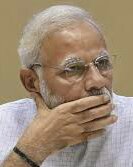
In the article titled “The Cost of Ruling: Anti-Incumbency in Elections”, author Nirmala Ravishankar highlights the direct and indirect cost of incumbency. Ravishankar writes that the direct cost is the impact of association with the ruling party at the centre on the incumbent’s fate. The party which controls the state dictates how the state votes in national elections, this is the indirect cost of incumbency, as per Ravishankar. Apart from this, anti-incumbency sentiments also stem out of voters frustration with the elected leader and in some cases out of the desire for change. With elections around the corner, it would be interesting to see how anti-incumbency impacts the fate of ruling dispensation in India.
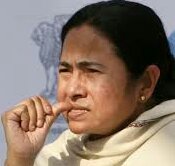
While the BJP is undoubtedly the front-runner in 2019, a closer look at the party’s political standing suggests its current dominance could counterintuitively be a liability rather than an asset. For starters, the conditions that paved the way for a historic mandate in 2014 are unlikely to rematerialize in 2019. That year presented something akin to a perfect electoral storm—a historically unpopular Congress Party, a lagging economy, and a compelling, charismatic prime ministerial candidate in Modi. The end result was a once-in-a-generation electoral rout. This triumph, in turn, rested on running the table in a relatively small number of states—a feat many party sympathizers doubt can be replicated.
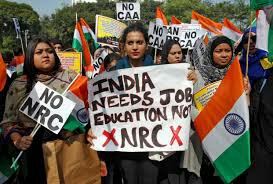
Furthermore, incumbency is something of a double-edged sword in India. In many democracies, incumbency provides politicians numerous tools with which they can perpetuate their political power. In the United States, for instance, name recognition and the perks of office, as well as general voter inertia, provide incumbents with a decisive leg up when it comes to reelection. In India, research suggests that incumbent politicians are not just vulnerable—in many instances they are affirmatively disadvantaged. The BJP’s growing presence in India’s states helps offset the geographic concentration of its 2014 performance, but it does not fully inoculate the party from voter hostility; history suggests that state incumbency, under certain conditions, can also adversely impact a party’s chances in national elections. These indirect costs of ruling complicate the party’s electoral math; for a ruling party linking its stature to its consistent numerical strength in parliament, the negative spillovers linked to state incumbency is a source of concern.
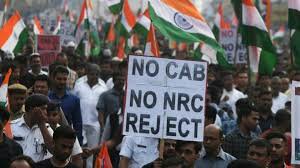
CAN LIGHTNING STRIKE TWICE?
The first challenge the BJP faces is to repeat its dominance in its traditional strongholds. In the 2014 election, the BJP captured 282 seats out of the 428 seats it contested nationally (or 66 percent). The party relied on coalition allies to contest another 112 constituencies (out of the 543 directly elected seats in the Lok Sabha). While the BJP made inroads in new territory—stretching from Tamil Nadu in the south to Assam in the east and Jammu and Kashmir in the north—most of its victories were concentrated in north and west India. In 2014, just eight states—Bihar, Chhattisgarh, Gujarat, Jharkhand, Madhya Pradesh, Maharashtra, Rajasthan, and Uttar Pradesh—accounted for 76 percent of the BJP’s parliamentary tally. All together, these states account for 273 seats, of which the BJP won 216 (nearly 80 percent). The efficiency with which the BJP translated votes into seats evinced the concentrated character of the party’s victory: with just 31 percent of all votes countrywide, it earned 52 percent of parliamentary seats.
 Consider constituencies where the BJP and the Congress were the top two finishers; these head-to-head contests are good indicators of the parties’ relative popularity. In 2014, there were 189 such contests; of these, the BJP won 166, or 87 percent. The country had not witnessed such a lopsided battle since 1984 (see figure 2)—when the Congress swept to power in the wake of Indira Gandhi’s assassination, winning 98 percent of direct BJP-Congress contests (in fairness, that was the first time the BJP had contested general elections as a party). The BJP’s decisive advantage over the Congress in 2014 can also be seen in the average margin of victory of their head-to-head contests, which touched 18 percent (again, the largest margin since 1984).
Consider constituencies where the BJP and the Congress were the top two finishers; these head-to-head contests are good indicators of the parties’ relative popularity. In 2014, there were 189 such contests; of these, the BJP won 166, or 87 percent. The country had not witnessed such a lopsided battle since 1984 (see figure 2)—when the Congress swept to power in the wake of Indira Gandhi’s assassination, winning 98 percent of direct BJP-Congress contests (in fairness, that was the first time the BJP had contested general elections as a party). The BJP’s decisive advantage over the Congress in 2014 can also be seen in the average margin of victory of their head-to-head contests, which touched 18 percent (again, the largest margin since 1984).
“I am not a magician, I have done so much for you…even if I sell my blood, it will not get enough money (for your needs),” a visibly emotional Mamata Banerjee told the crowd at an election rally in West Bengal on Tuesday. At every public meeting—84 have been planned so far, two for each parliamentary constituency in the state—the chief minister has been presenting a report card of her eight years at the helm in Bengal, and ending her speeches with an earthy appeal on the importance of maintaining communal harmony. Didi, as she is fondly referred to, typically ends her speech by reciting parts of Chandi shloka, an ode to goddess Durga—Bengal’s most worshipped deity.
After a visit to the Bengal hinterland, it becomes clear why the chief of Trinamool Congress (TMC) needs to invoke the gods. Mamata is fighting a furious battle to protect her turf from a resurgent Bharatiya Janata Party (BJP).
The unpaved road which connects Bisriya village to the outside world is as rugged as it gets. On a hot summer afternoon in April, the village in West Bengal’s Purulia district, bordering Jharkhand, wore a deserted look. Few were lazing under the shade of a giant Kusum tree.“No political party has been able to address the core issues raised by the BJP, which is equating India with monolithic Hinduism,” says Amitava Chowdhury, a public health practitioner from the Sundarbans and a keen observer of Bengal politics. “In Bengal, Mamata’s primary area of influence is south Bengal, which she cemented through her struggle for people’s rights. The party spread in the rest of the state through opportunistic elements whose primary objective was to make money, which led to anger on the ground.” In the 2014 elections, the BJP won just two of the 42 Lok Sabha seats in the state, compared to 34 won by the TMC, its best performance ever. But in 2019, the saffron party has set itself a steep target of winning 23 seats, hoping to recover some of its expected losses in Hindi heartland states. How close or far it will end up from the target will depend on several factors, most importantly, by how much vote share of Left parties and the Congress collapses in a bipolar contest. In 2014, the Left front and the Congress together polled close to 40% votes, while the TMC and the BJP increased their vote share to 40% and 17%, respectively.

Though, the average Left voter seems to have changed sides, the Muslim voter is strongly behind the TMC. “Bengali Muslims stagnated during the Left rule, but under Mamata their economic and social mobility went up,” says a political analyst. “Muslims are participating more in civil society activities, they are vying for mainstream jobs, they have assumed leadership positions at local party levels… this has antagonized the bhadralok (elite) and the BJP is exploiting this situation by terming it as appeasement,” he said, adding that in at least 28 Lok Sabha seats the Muslim voters will play a determining role. This is likely to offset some of the losses to the TMC as far as anti-incumbency is concerned.










